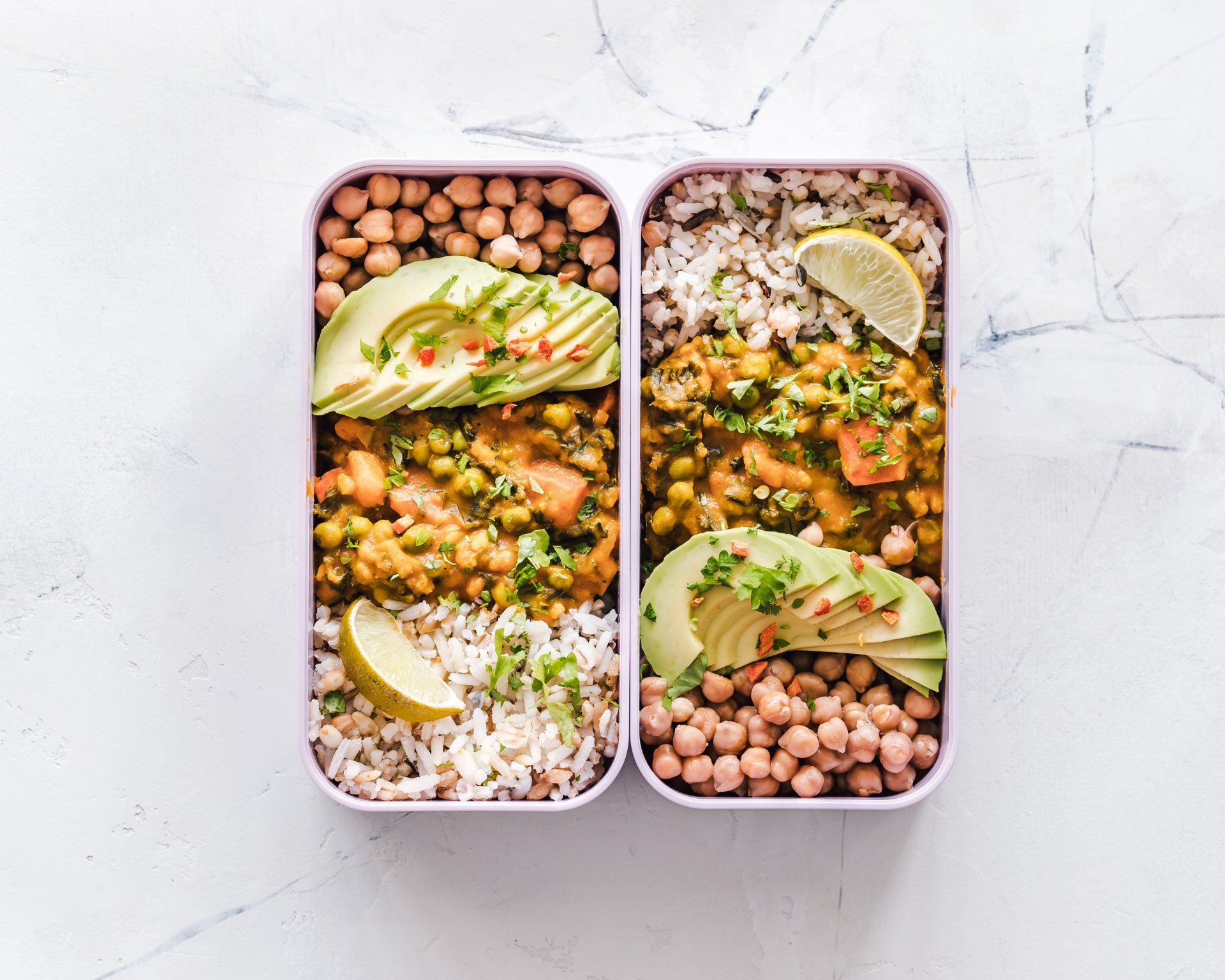The Healthiest Work Lunches
On your health journey, lunch will likely be the most challenging of your daily meals. Many working individuals do not have the option to eat lunch at home. That makes dining out for lunch extremely easy. Going out to eat is not necessarily bad, if you order correctly, but it can be more complicated to make sure you have the correct balance of nutrients in your diet.

Home-cooked meals are almost always the best option for your health journey for several reasons:
- You know exactly what is in your food and how it was prepared.
- You can control the portion. When dining out, we often feel the need to finish what’s on our plate, even though we might not be hungry. Who wants to bring leftovers back to their desk and try to remember to bring them home at the end of the day?
- Meals prepared at home are almost always less expensive than meals purchased from restaurants or the work cafeteria.

Tips for BYO Lunch:
- When packaging up tonight’s dinner, portion out some in a container for tomorrow.
- Vary up your sandwich style: bread, pita pocket, wrap, etc.
- Think ahead when planning sides and snacks.
- Freeze beverages the night before and let them thaw all morning while you work.
Bad Excuses for Not Brown Bagging:
- No microwave at work. Solution: Bring a meal that doesn’t need to be microwaved (i.e. salad, sandwich, soup in a thermos, etc.).
- No fridge or freezer at work. Solution: Purchase a good lunch box and a couple ice packs to keep your food cool during the day.
- Peer Pressure - everyone else goes out every day. Solution: Your health is worth more than that. Again, it is not bad to dine out if you do it correctly (see blog mentioned above), but maybe cut it down to once a week. Friday can be a celebration day for yet another reason--lunch out should be a treat!
Suggestions for Easy, Healthy Lunches - Mix and Match!

The better food your put in your body, the more energy you will have, the clearer your mind, and the better you’ll sleep (which affects everything else). If you like the changes and want to see more, join EnergyRx. I will teach you how to navigate all of this and more in my course! CLICK HERE TO GET THE TAKE BACK MY ENERGY QUICK GUIDE FOR FREE.
Don't Miss Out On More!

Heidi Toy FNTP
I help people all over the world heal by identifying and treating the root cause of their body imbalances. Through diet and nutrition, I guide them towards wholeness and balanced lives.
Heidi Toy Functional Medicine Blog














































































































